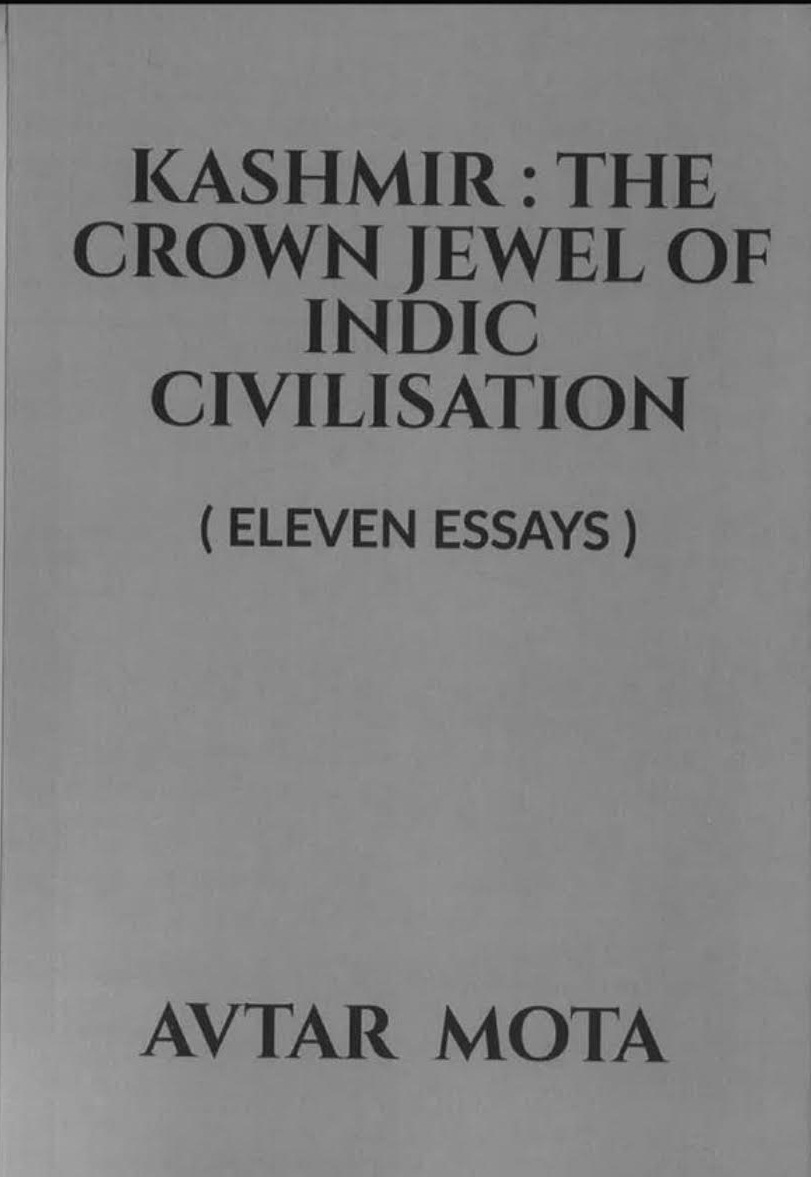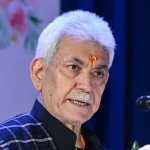BOOK REVIEW
The author claims that despite the destruction of many ancient temples and manuscripts, the perseverance of Kashmiri Pandits has helped preserve a substantial part of this heritage. The book offers a rich exploration of Kashmiri culture, history, and contributions to literature, art, and spirituality.
In the preface, Avtar Mota explains the significance of the number ‘Eleven’ in the titles or subtitles of his books: “eleven holds a significant place in Kashmiri culture. In Srinagar, the Ziyarat Dastgeer Sahib is affectionately called Kaahnov (the saint with eleven names) by Kashmiri Muslims and was revered by Kashmiri Pandits before their exile. Additionally, Shiva as Rudra exists in eleven forms. Historically, during periods of persecution, Kashmiri Pandits were said to be reduced to only eleven households, which later grew again. This has led to the proverb, ‘Has Kashmir been reduced to eleven households again?”
The book begins with the story of the poet and historian Kalhana Pandit, author of Rajatarangini. Born into a wealthy Brahmin family, Kalhana’s father, Champaka, served as the Lord of the Gate under King Harsha of the Lohara dynasty. Written between 1148 and 1150 AD, Kalhana’s Rajatarangini is a unique historical poem consisting of 7,826 verses divided into eight books or Tarangas. Rajatarangini chronicles the reigns of numerous kings, with Kalhana striving to record history accurately and impartially. His descriptions are often poetic, employing metaphors, similes, and other literary devices to bring historical events to life.
Many essays connect Kashmir to India’s civilizational ethos, highlighting its substantial contribution to Sanskrit literature. The region’s poets and scholars have significantly influenced various fields, from poetics to philosophy. I believe Sanskrit poetry underscores the goals of human life: Dharma, Artha, Kāma, and Mokṣha, while also emphasizing human effort and destiny. Kashmir’s poets have explored diverse themes, richly contributing to India’s cultural heritage.
Dara Shikoh’s Kashmiri Pandit teacher, Chander Bhan ‘Brahman’, was a distinguished scholar and the author of the first Urdu Ghazal. Born into a learned and affluent family, his father served under Emperor Jahangir. Chander Bhan, proficient in Persian, Arabic, Hindi, Sanskrit, and Urdu, studied under prominent teachers including Abdul-Hakim Sailkoti, and joined Shahjahan’s court, serving for 30 years. Known for his Persian calligraphy and poetry, Chander Bhan was a secretary who chronicled Shahjahan’s travels and the emperor’s diary.
His works include a Diwan with Ghazals and quatrains, historical compositions like Chahar-Chaman, and collections of Sufi writings. Chander Bhan’s poetry, blending Tawhid, Sufism, and Vedanta, earned him recognition in Iran. Despite deep Islamic cultural influences, his writings reveal Hindu proclivities, showcasing his spiritual identity.
Revisiting Lal Ded’s Poetry, the author recalls witnessing Bharatanatyam dancer Rama Vaidyanathan mesmerizing Srinagar with her dance on the mystical verses of Lal Ded, a 14th-century saint poetess from Kashmir. Lal Ded’s poetry, composed of four-line structured themes called “Vaakhs”, is deeply rooted in humanism and Kashmir’s Shaiva Darshana. Her verses have profoundly impacted Kashmiri culture and literature. Contrary to some false narratives, Lal Ded did not walk naked; her poetry metaphorically describes shedding the materialistic world for spiritual enlightenment.
Mota refers to the spiritual significance that trees hold for Kashmiri Hindus, who worship indigenous trees like Chinar, Deodar, Elm, Walnut, Mulberry, and Birch as a form of gratitude and reverential ecology. The Chinar tree, native to Kashmir and symbolically significant in Kashmiri poetry and culture, is celebrated for its majestic presence and cooling shade. The Sikh scriptures mention that Guru Nanak Dev Ji addressed Brahmins of Mattan under a Chinar tree. The Muslim saints and rulers also planted Chinar saplings across the valley particularly around the shrines. A noted Turkish poet, Nazim Hikmet, has written a beautiful poem titled ‘Walnut Tree’: “My head foaming clouds, sea inside me and out/ I am a walnut tree in Gulhane Park…”
In the chapter ‘The Sacred Water Bodies of Kashmir’, Mota reflects on the water bodies that are sacred to Kashmiri Hindus. “The River Vitasta was worshiped as Uma, the consort of Shiva, with significant confluences considered holy, such as Sardapura (Shadipora), termed Prayaag. The Gangbal Lake below Harmukh peak, at 17,000 feet, was as sacred as the Ganga. Harmukh and surrounding areas, known as Nandi-kshetra, were revered. The Amarnath cave route was called Amareshwar-kshetra, and Martand Teertha was Surya-Kshetra due to the Sun Temple built by King Lalitaditya. Many peaks were named after Hindu deities, and sacred springs and lakes, like Kheerbhawani and Mattan, were significant pilgrimage sites.”
Harmukh Peak, revered as the “Kailash of Kashmir,” is considered the abode of Shiva by Hindus. Sacred peaks in Srinagar include Shankaracharya and Hari Parbat. Bhadrakal hill hosts the Bhadrakali Temple, mentioned in Rajatarangini.
Kashmiri Shawls in Europe and Russia: A miniature painting in the Philadelphia Museum of Art depicting Sita throwing her shawl in the Ramayana highlights the ancient origins of shawls. Kashmir Pashmina shawls, renowned for their exquisite quality, are significant cultural artifacts. Shawl-like drapery was worn by ancient Egyptian, Roman, Greek, Chinese, and Zoroastrian women, emphasizing its historical significance. In ancient Rome and Greece, shawls were status symbols, often intricately designed. Kashmir shawls, especially Pashmina, have a rich history, admired globally and linked to high-status individuals, including European royalty.
Kashmir’s contribution to Sanskrit literature is immense. The region was a center of Sanskrit learning for over two millennia, producing numerous masterpieces in history, poetry, philosophy, and more. The valley’s natural beauty and strategic location contributed to its prosperity and cultural richness, attracting scholars and artists. Prominent figures include Rishi Vasugupta, Acharya Abhinavagupta, Kalhana, Bilhana, and Anandavardhana.
Kashmir produced key figures in aesthetics and poetics, such as Anandavardhana, who developed the Dhvani theory, revolutionizing Sanskrit literary theory by emphasizing the importance of suggestion in poetry. Abhinavagupta’s extensive commentaries on Bharata Muni’s Natya-shastra and Anandavardhana’s works further solidified Kashmir’s role in shaping Indian aesthetics.
The connection of Kalidasa to Kashmir, while intriguing, remains partially speculative, and one expected the author to present sufficient critical scrutiny.
Ancient Kashmir was rich in musical heritage, reflected in archaeological finds and ancient texts like the Nilamata Purana and the Natya Shastra. Musical instruments featured prominently in social and religious events. Key instruments included the Veena, Venu (flute), Shankha (conch shell), Pataha (drum), Muraja (percussion), Dardara (bell-shaped drum), Cymbals, Dindima (folk instrument), and Dundubhi (conical drum).
Mota’s literary repertoire includes several well-received books, such The Tulips & Snowstorm, The Shikaras In The Frozen Lake, The Books You Missed To Read, The Essays That May Change Your Beliefs and the biography of the painter Bansi Parimu. His works have been widely commented upon, reflecting his profound impact on the literary and cultural discourse surrounding Kashmir.
Kashmiri folk traditions, including Vanvun, lullabies, and Mehndiraat songs, that demonstrate the region’s rich cultural heritage also finds a mention in the book. According to Mota, Vanvun singing, a traditional Kashmiri folk singing style, parallels the ancient Sama-Vedic chants.
According to Mota, the Muslims seek blessings from the Prophet for peaceful accomplishment of the ceremony during Mehnziraat, Dastarbandi etc…” “Bismillah Karithh Hemov Vanuvunaye/Saahiban Anjaam Onuye” (Saying, Bismillah, let us begin the vanuvunchnats, Lord has finally brought this day for us). These practices, echoing ancient Vedic chants, reflect a unique blend of religious and cultural influences, fostering a sense of community and continuity in Kashmiri society.
It is the chapter devoted to ‘Khatris of Kashmir’ that truly stands out for its original research and presentation. Deriving their name from the Sanskrit “Kshatriya,” they trace their lineage to notable figures like Lord Rama and Lord Krishna. Their roles evolved over time to include mercantilism, becoming dominant in trade and commerce akin to Marwaris and Gujaratis.
In Kashmir, Khatris arrived during the Mughal period, with significant influxes during the Sikh and Dogra rulers. They established themselves as prominent traders and integrated into the Kashmiri Pandit society. By the 20th century, Khatri traders were widespread across Kashmir, from urban centers to remote areas. They were known for their fairness and integration into local customs and culture.
Maharaj Ganj, a key trading hub in Srinagar, saw significant development due to Khatri traders who specialized in wholesale commodities like provisions, textiles, and tea. Prominent families such as the Mehras, Chopras, and Malhotras were integral to the economic fabric of Kashmir. The Khatris also ventured into various other businesses, including photography, printing, hospitality, and transportation, pioneering many sectors in the region.
The rise of terrorism in the 1990s forced many Khatris to flee Kashmir, similar to the Kashmiri Pandits. However, the legacy of the Khatris in Kashmir remains a testament to their resilience and entrepreneurial spirit, having left an indelible mark on the region’s history and development.
The last chapter titled ‘Kashmiri Artists & The Pahari Miniature Art’, informs the readers of the immense contribution the Raina/Razdan families played in the development of Pahari miniature art in India. This connection is traced to Nainsukh Raina (1710-1778 AD) and his family, who were prominent figures in the Pahari miniature art scene.
Nainsukh’s work, particularly his intimate and detailed portraits of Raja Balwant Singh of Jasrota, is highly regarded. His legacy continued through his sons and nephews, who further developed the Pahari miniature style.
Top of Form
Top of Form
The structure of the book, divided into distinct essays on various topics, while comprehensive, sometimes disrupts the flow of the narrative. A more interconnected structure could help in creating a seamless narrative. Also, detailed citations and a bibliography would enhance the book’s credibility and usefulness for academic readers.
However, if the aim of the author is to ensure that the younger generation appreciates the rich legacy contained in the book, one must admit Mota has succeeded substantially.
(X Gurgaon-based, Ashok Ogra is a noted management & media professional cum educator and works for reputed Apeejay Education. He can be reached on: [email protected])








